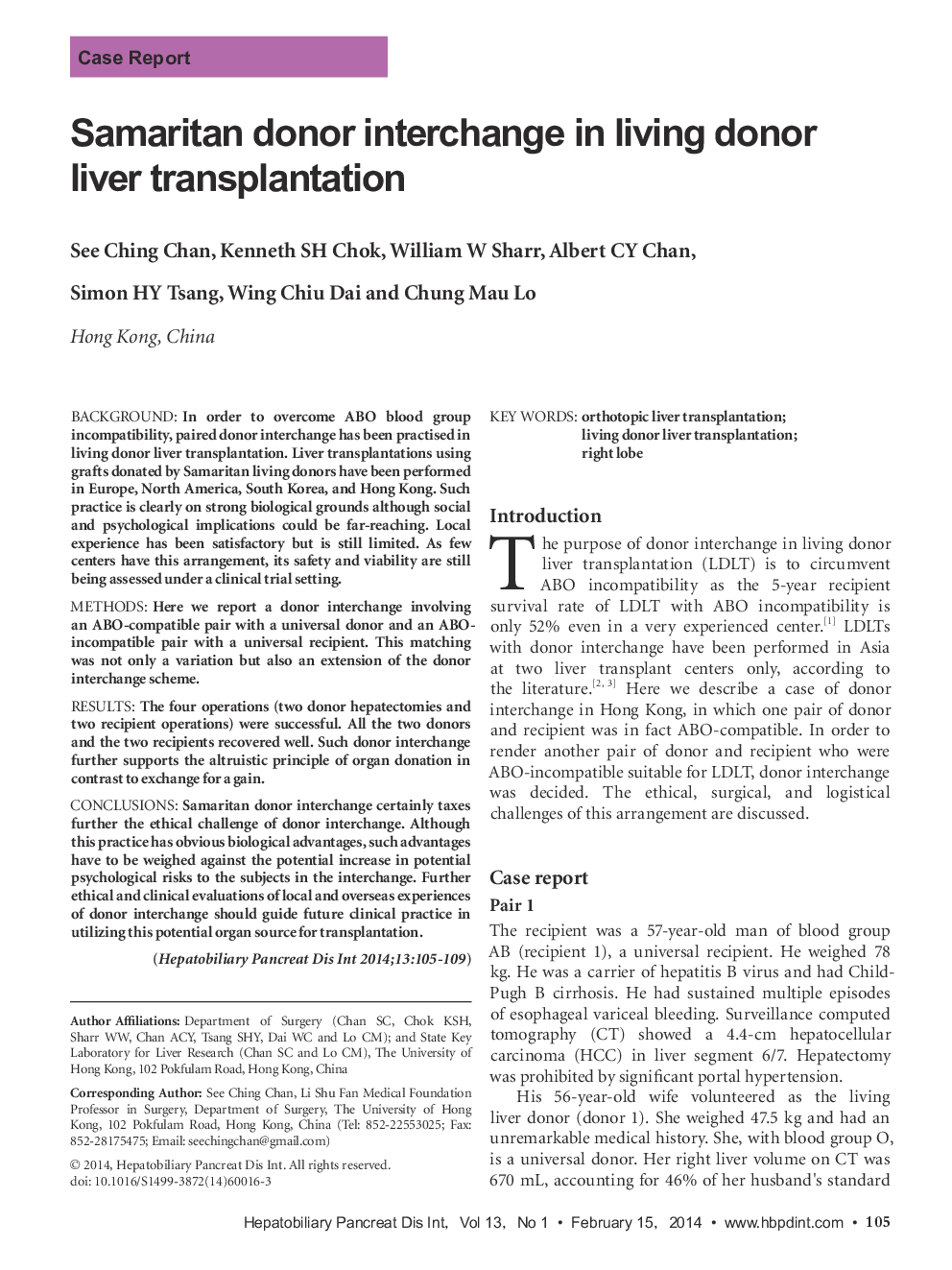| کد مقاله | کد نشریه | سال انتشار | مقاله انگلیسی | نسخه تمام متن |
|---|---|---|---|---|
| 3337584 | 1213806 | 2014 | 5 صفحه PDF | دانلود رایگان |
BackgroundIn order to overcome ABO blood group incompatibility, paired donor interchange has been practised in living donor liver transplantation. Liver transplantations using grafts donated by Samaritan living donors have been performed in Europe, North America, South Korea, and Hong Kong. Such practice is clearly on strong biological grounds although social and psychological implications could be far-reaching. Local experience has been satisfactory but is still limited. As few centers have this arrangement, its safety and viability are still being assessed under a clinical trial setting.MethodsHere we report a donor interchange involving an ABO-compatible pair with a universal donor and an ABO-incompatible pair with a universal recipient. This matching was not only a variation but also an extension of the donor interchange scheme.ResultsThe four operations (two donor hepatectomies and two recipient operations) were successful. All the two donors and the two recipients recovered well. Such donor interchange further supports the altruistic principle of organ donation in contrast to exchange for a gain.ConclusionsSamaritan donor interchange certainly taxes further the ethical challenge of donor interchange. Although this practice has obvious biological advantages, such advantages have to be weighed against the potential increase in potential psychological risks to the subjects in the interchange. Further ethical and clinical evaluations of local and overseas experiences of donor interchange should guide future clinical practice in utilizing this potential organ source for transplantation.
Journal: Hepatobiliary & Pancreatic Diseases International - Volume 13, Issue 1, 15 February 2014, Pages 105-109
